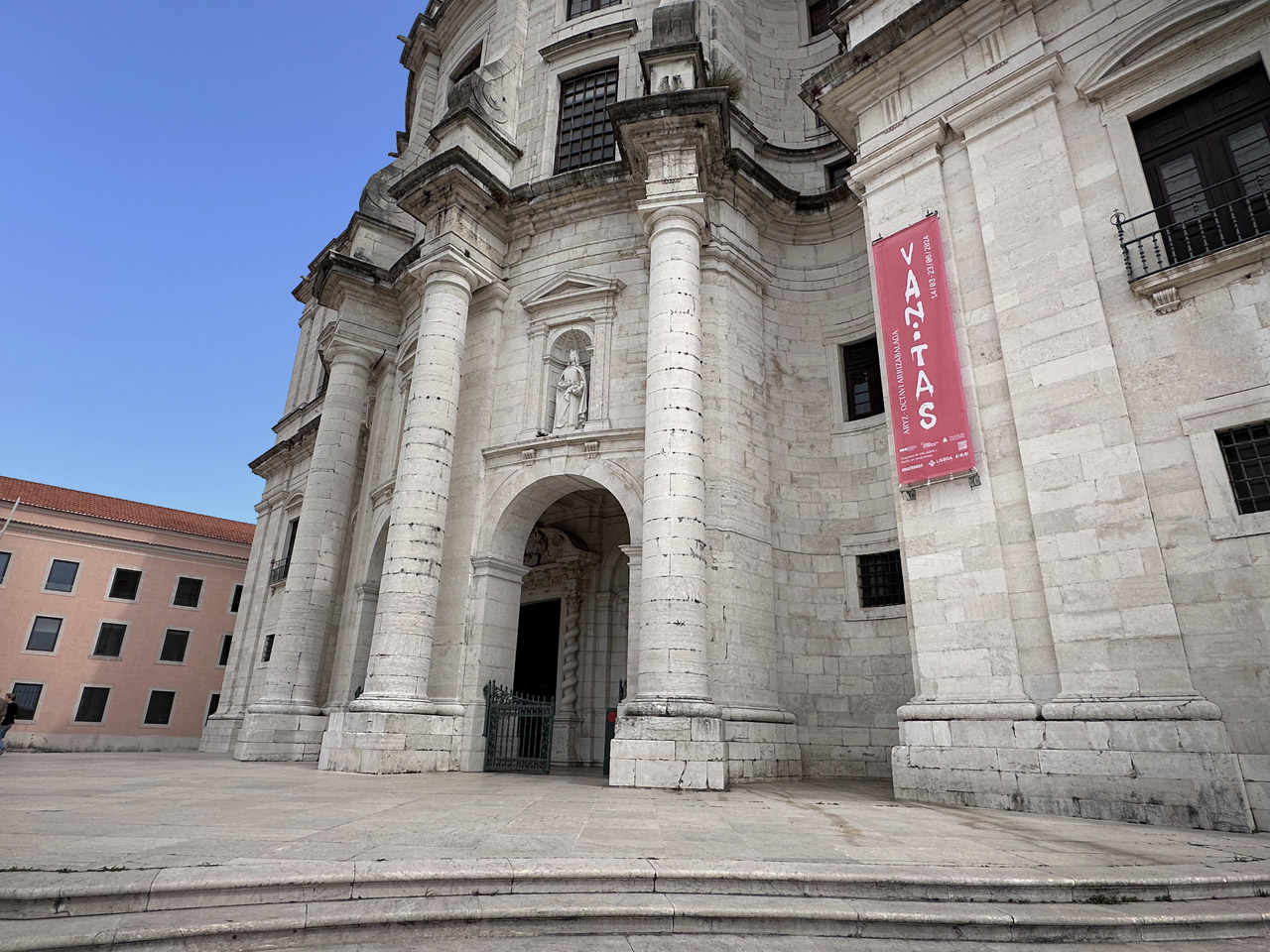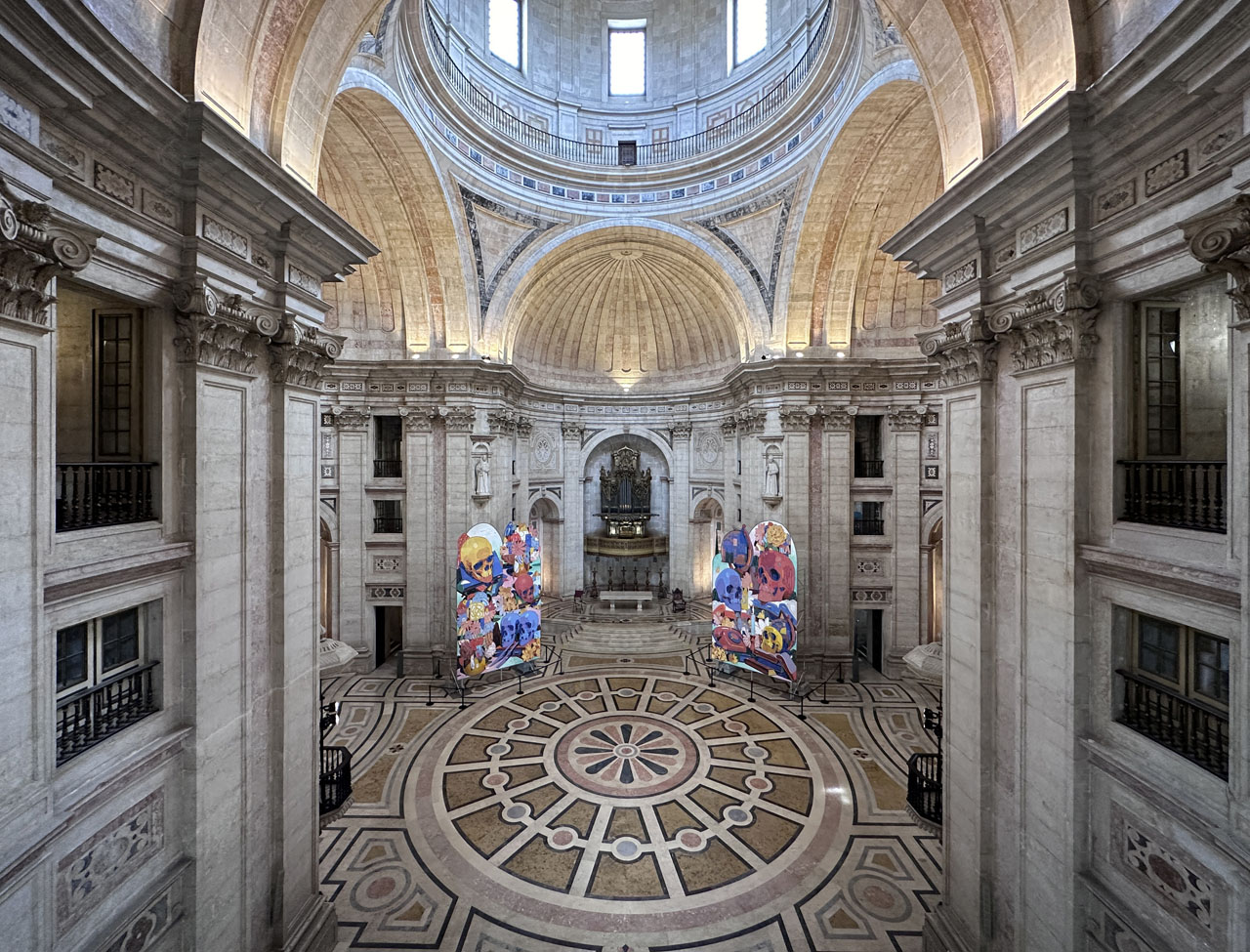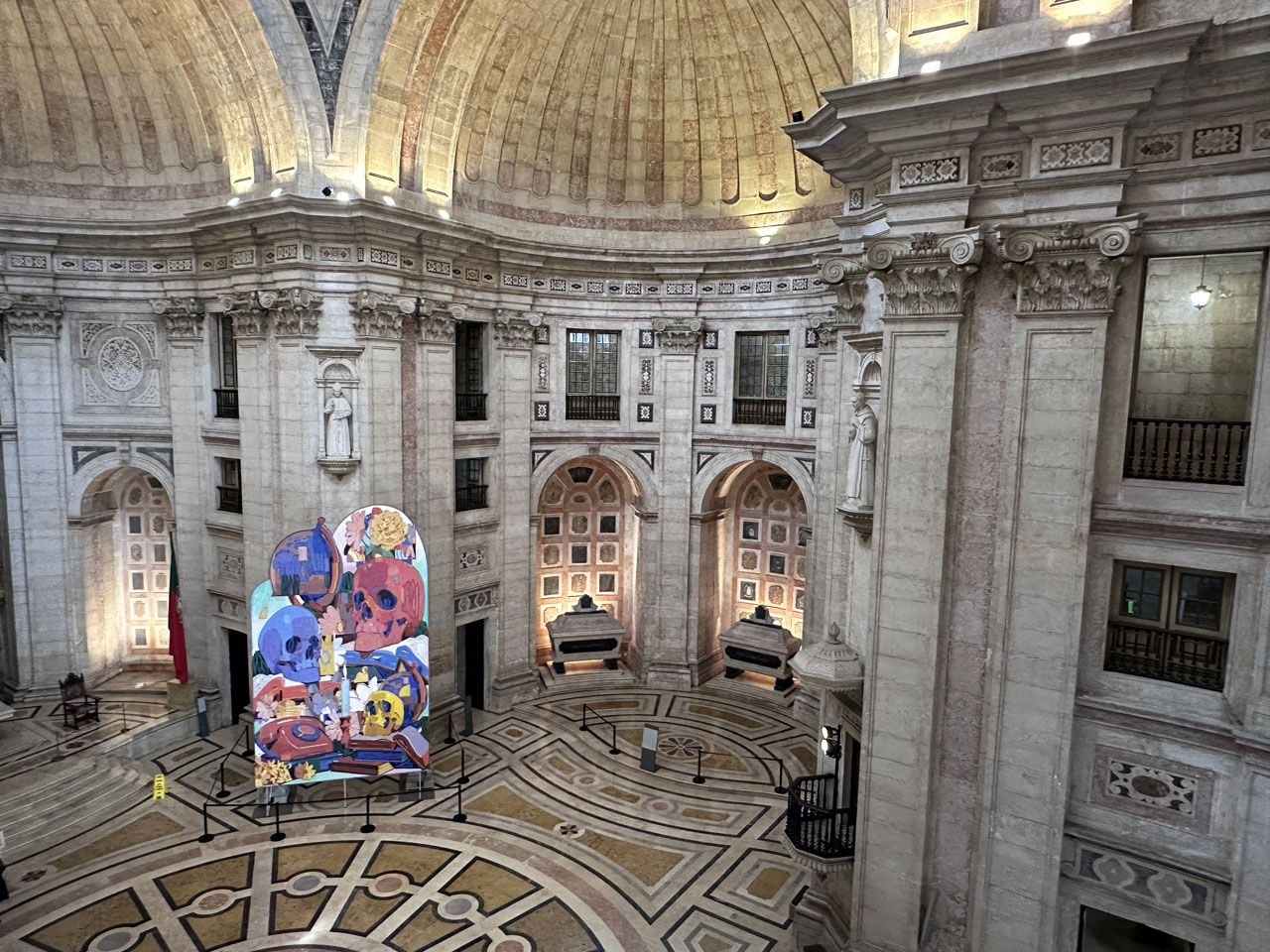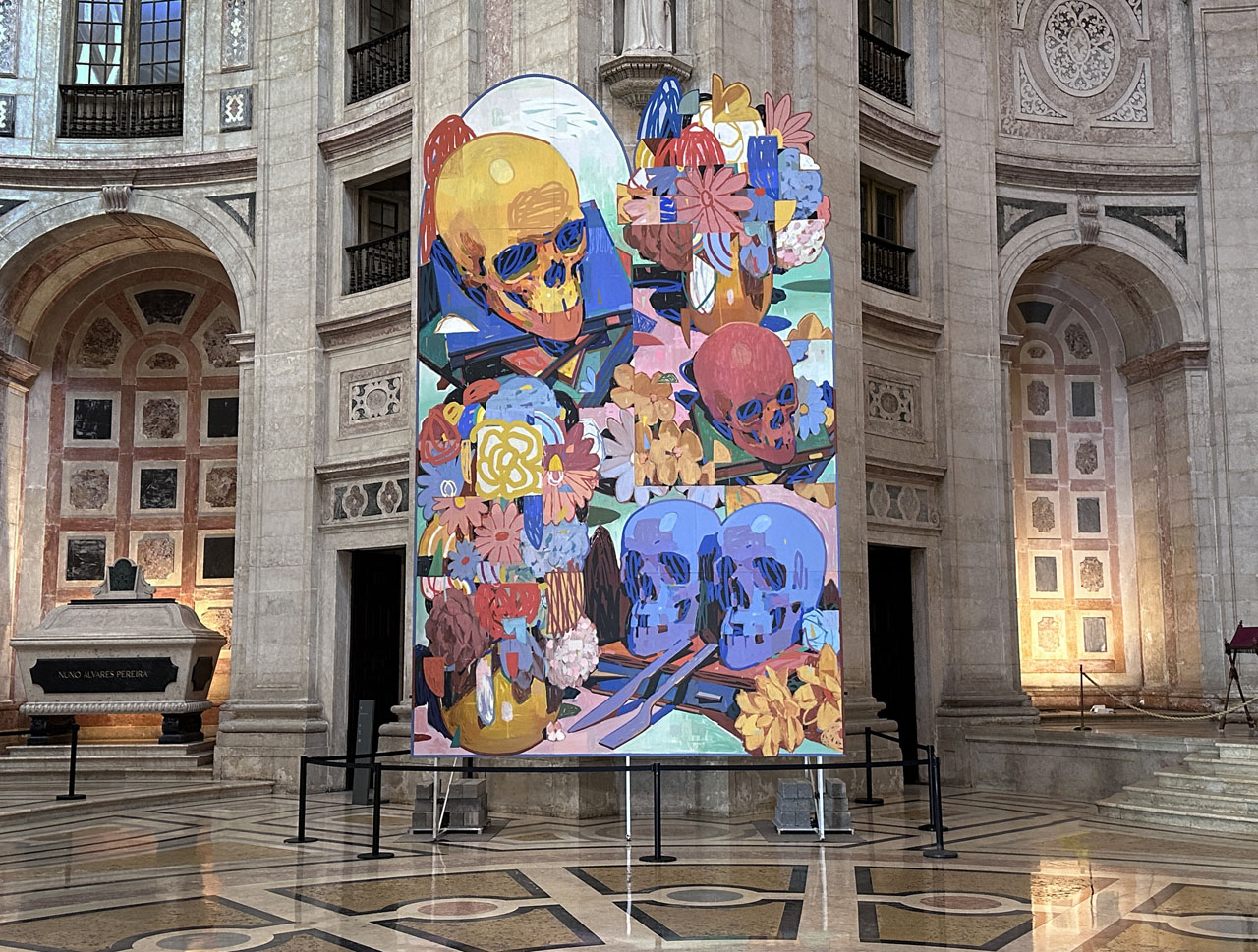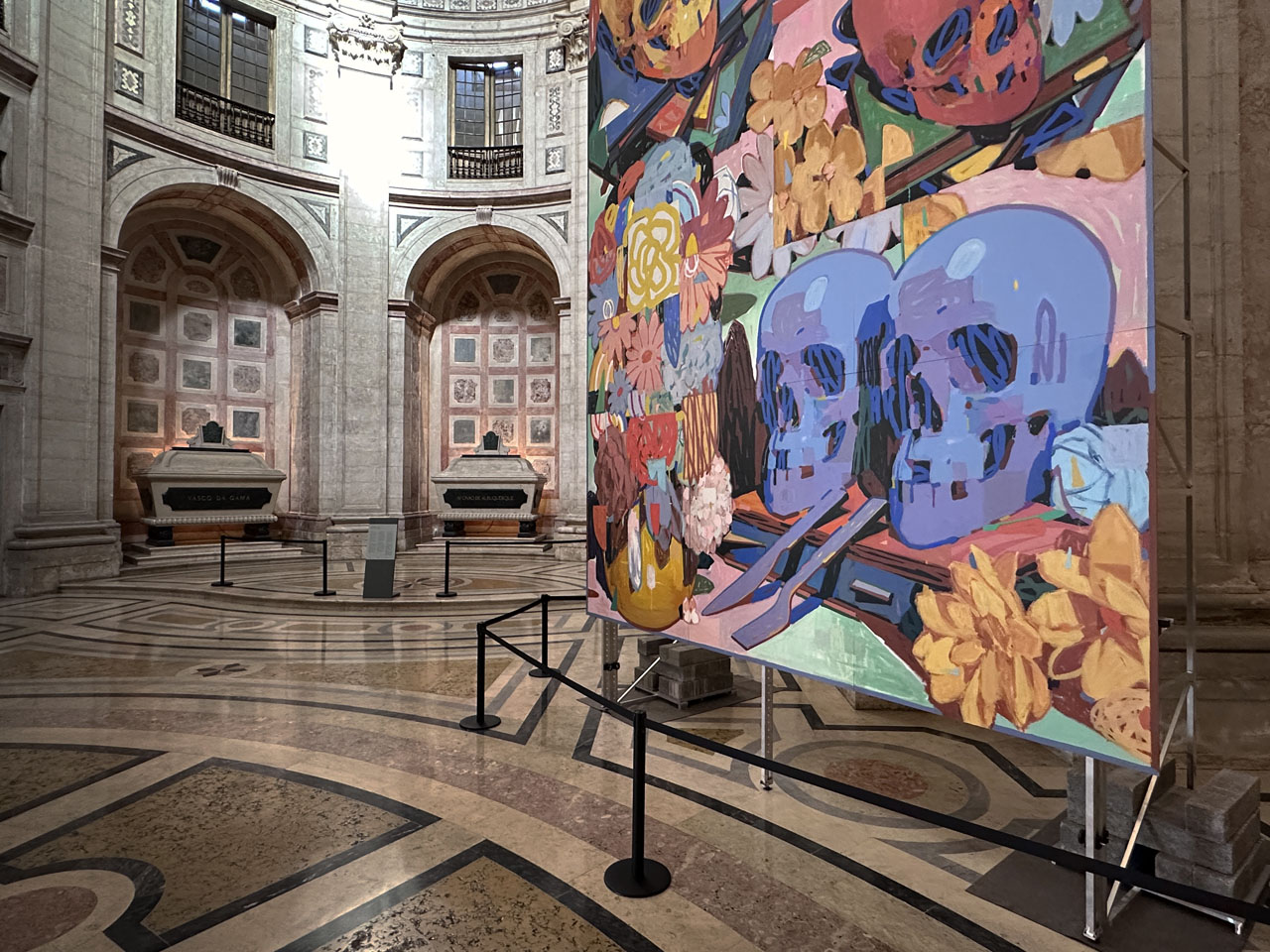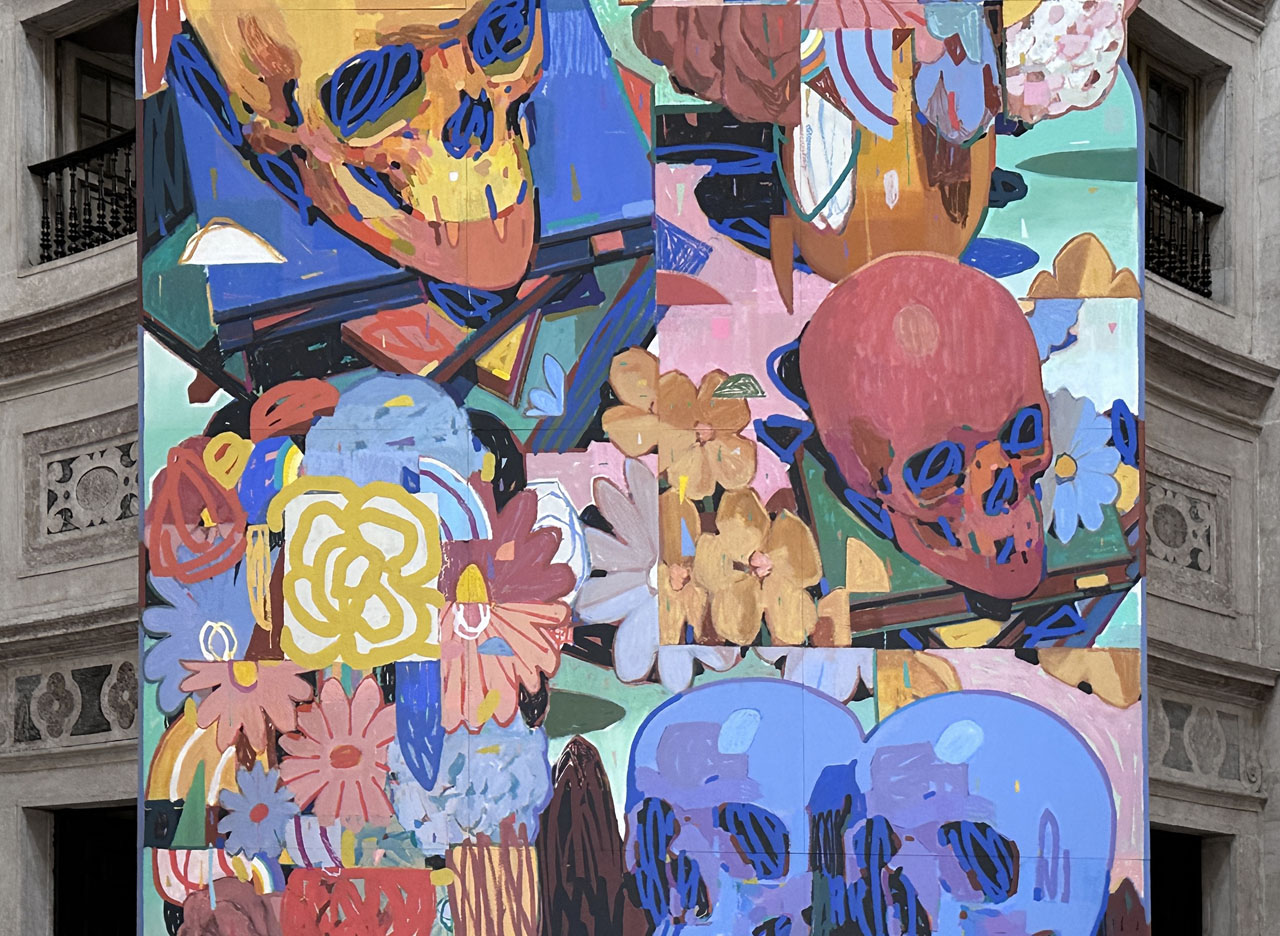Housed within the central rotunda of Lisboa’s National Pantheon, Aryz’s latest installation takes full advantage of its emblematic surroundings to re-frame the centuries-old conversation about our own mortality. The two works reference the vanitas paintings of the 16th and 17th centuries which sought to emphasize the transience of life. An archetypal example by an unknown artists hangs elsewhere within the former Church of Santa Engrácia and this still life is populated with an assortment of memento mori: a recently-extinguished candle, an hour-glass through which the sands of time have run and a skull, as the ultimate reminder of death.
In stark contrast to these invariably small, achromatic paintings of the Dutch Golden Age, the diptych by the Spanish artist has been painted on a monumental scale and are saturated with color. But perhaps the most important differentiation lies in the detail: the candle is still lit, the flowers remain in bloom and the skull is imbued with a sort of frenetic el Día de Muertos energy. Context has always been centrally important to the work of artists like Aryz who cut their teeth painting in the street and, indeed, the setting of the installation within the Pantheon provides the key to understanding these differences.
Entombed with the Pantheon are some of Portugal’s most influential public figures such as the footballer Eusébio, the singer Amália Rodrigues and the writer Aquilino Ribeiro. Death may have come for them all, as forewarned by those vanitas painters of the past, but their contributions still echo through Portuguese society and live on through the beauty, passion and insight which they have given to others. In the words of the writer Jeffrey Cranor ‘Death is only the end if you assume the story is about you’.
The installation is part of the Underdogs Public Art Programme and continues until 23rd June 2024 at the National Pantheon, Campo de Santa Clara, 1100-471 Lisboa.
Photo credit: feralthings




